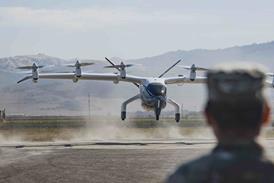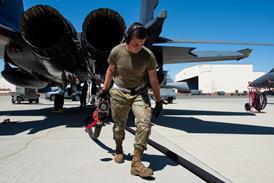INDUSTRY PROPOSALS for the X-33 re-useable-launch-vehicle programme, a NASA effort aimed at a single-stage-to-orbit (SSTO) replacement for the Space Shuttle, are expected to be submitted in mid-May.
With a shortlist expected at the end of July, NASA will have to make a quick choice, between wing-borne-landing SSTO options offered by Lockheed Martin- and Rockwell-led teams and the vertical-take-off-and-landing SSTO option, being tried out in proof-of-concept form, with the DC-XA by the McDonnell Douglas-led team (Flight International, 20-26 March).
"It's a pretty quick effort as we want to be flying the X-33 by 1999," says Dab Dumbacher, NASA's DC-XA project manager.
The DC-XA, an improved version of the MDC DC-X Delta Clipper Experimental re-useable-launch-vehicle concept demonstrator was transported to the US Army's White Sands test range in New Mexico on 18 March, to begin static firings in mid-April. A seven-flight test programme will begin around mid-May. The flights will evaluate the performance of advanced materials used in the DC-XA.
The DC-X "...convinced people that a liquid-oxygen/liquid-hydrogen (LO2/LH2) multiple- equipped rocket could be operated like an aircraft", say programme officials. Dumbacher says that the DC-XA will take this one step further. "We're turning the DC-X into a test-bed, and that's the important part," he says.
The DC-XA incorporates a MDC-designed composite cryogenic LH2 tank, a composite inter-tank structure and an advanced aluminum-lithium cryogenic LO2 tank made by Energia of Russia. The rocket also uses an Aerojet-developed "gasification" unit, which converts cryogenic hydrogen from liquid to gas for use in the reaction-control system and auxiliary power unit.
Source: Flight International




















